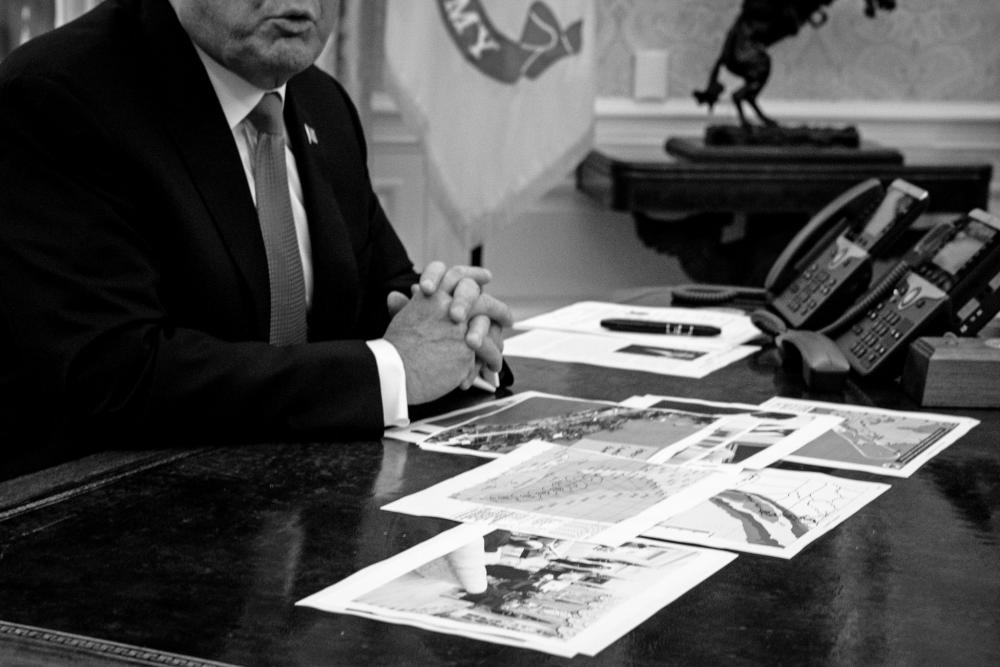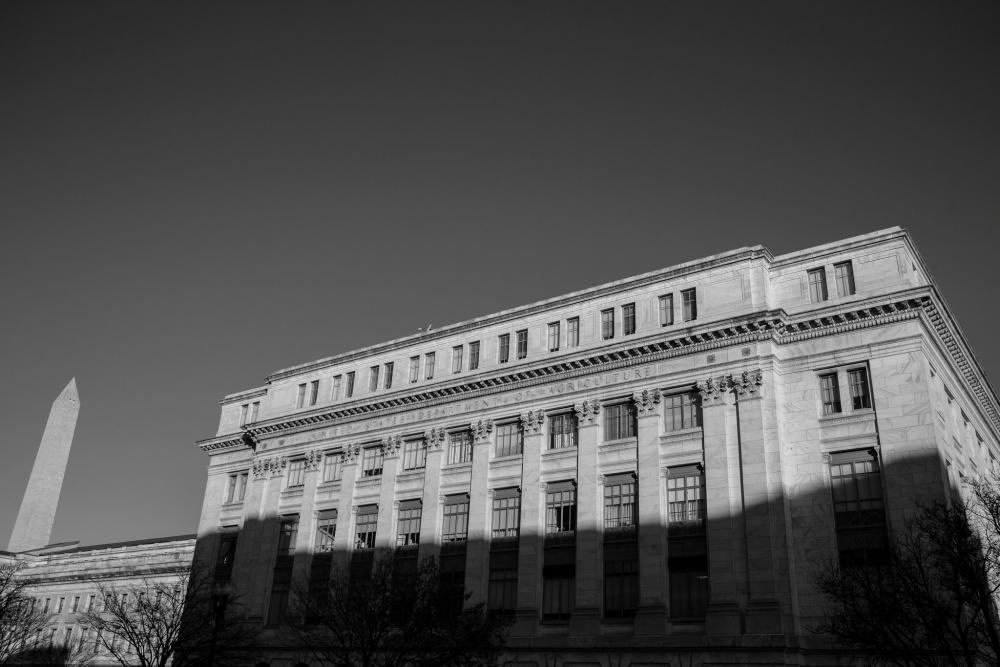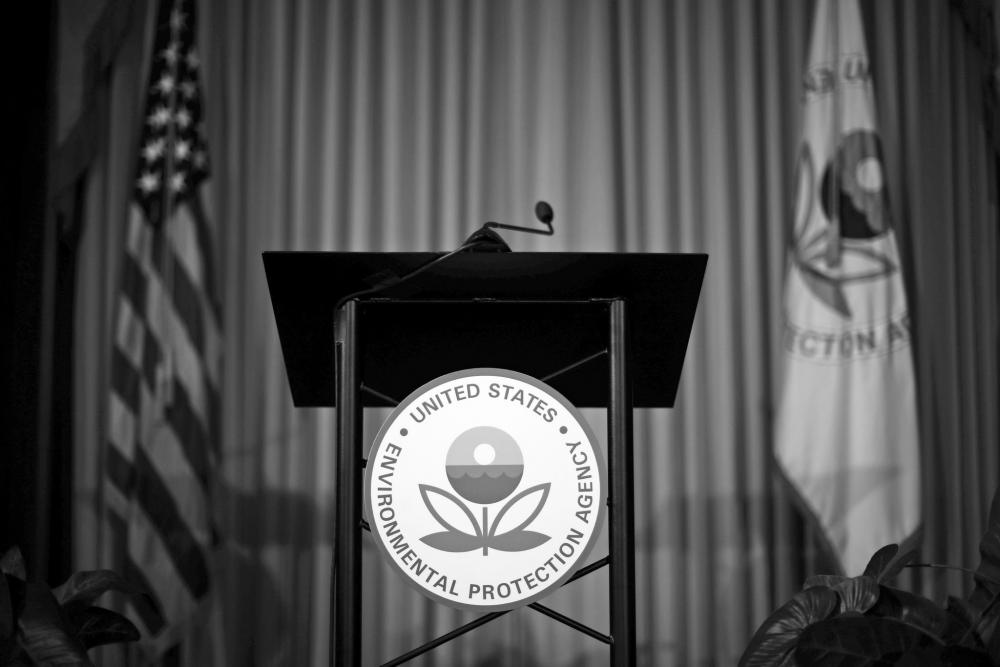Science Under Attack: How Trump Is Sidelining Researchers and Their Work

In just three years, the Trump administration has diminished the role of science in federal policymaking while halting or disrupting research projects nationwide, marking a transformation of the federal government whose effects, experts say, could reverberate for years.
Political appointees have shut down government studies, reduced the influence of scientists over regulatory decisions and in some cases pressured researchers not to speak publicly. The administration has particularly challenged scientific findings related to the environment and public health opposed by industries such as oil drilling and coal mining. It has also impeded research around human-caused climate change, which President Trump has dismissed despite a global scientific consensus.
But the erosion of science reaches well beyond the environment and climate: In San Francisco, a study of the effects of chemicals on pregnant women has stalled after federal funding abruptly ended. In Washington, D.C., a scientific committee that provided expertise in defending against invasive insects has been disbanded. In Kansas City, Mo., the hasty relocation of two agricultural agencies that fund crop science and study the economics of farming has led to an exodus of employees and delayed hundreds of millions of dollars in research.
“The disregard for expertise in the federal government is worse than it’s ever been,” said Michael Gerrard, director of the Sabin Center for Climate Change Law at Columbia University, which has tracked more than 200 reports of Trump administration efforts to restrict or misuse science since 2017. “It’s pervasive.”
Hundreds of scientists, many of whom say they are dismayed at seeing their work undone, are departing.
Among them is Matthew Davis, a biologist whose research on the health risks of mercury to children underpinned the first rules cutting mercury emissions from coal power plants. But last year, with a new baby of his own, he was asked to help support a rollback of those same rules. “I am now part of defending this darker, dirtier future,” he said.
This year, after a decade at the Environmental Protection Agency, Mr. Davis left.
“Regulations come and go, but the thinning out of scientific capacity in the government will take a long time to get back,” said Joel Clement, a former top climate-policy expert at the Interior Department who quit in 2017 after being reassigned to a job collecting oil and gas royalties. He is now at the Union of Concerned Scientists, an advocacy group.
Mr. Trump has consistently said that government regulations have stifled businesses and thwarted some of the administration’s core goals, such as increasing fossil-fuel production. Many of the starkest confrontations with federal scientists have involved issues like environmental oversight and energy extraction — areas where industry groups have argued that regulators have gone too far in the past.
“Businesses are finally being freed of Washington’s overreach, and the American economy is flourishing as a result,” a White House statement said last year. Asked about the role of science in policymaking, officials from the White House declined to comment on the record.
The administration’s efforts to cut certain research projects also reflect a longstanding conservative position that some scientific work can be performed cost-effectively by the private sector, and taxpayers shouldn’t be asked to foot the bill. “Eliminating wasteful spending, some of which has nothing to do with studying the science at all, is smart management, not an attack on science,” two analysts at the conservative Heritage Foundation wrote in 2017 of the administration’s proposals to eliminate various climate change and clean energy programs.

The president’s desk. Erin Schaff/The New York Times
Industry groups have expressed support for some of the moves, including a contentious E.P.A. proposal to put new constraints on the use of scientific studies in the name of transparency. The American Chemistry Council, a chemical trade group, praised the proposal by saying, “The goal of providing more transparency in government and using the best available science in the regulatory process should be ideals we all embrace.”
In some cases, the administration’s efforts to roll back government science have been thwarted. Each year, Mr. Trump has proposed sweeping budget cuts at a variety of federal agencies like the National Institutes of Health, the Department of Energy and the National Science Foundation. But Congress has the final say over budget levels and lawmakers from both sides of the aisle have rejected the cuts.
For instance, in supporting funding for the Department of Energy’s national laboratories, Senator Lamar Alexander, Republican of Tennessee, recently said, “it allows us to take advantage of the United States’ secret weapon, our extraordinary capacity for basic research.”
As a result, many science programs continue to thrive, including space exploration at NASA and medical research at the National Institutes of Health, where the budget has increased more than 12 percent since Mr. Trump took office and where researchers continue to make advances in areas like molecular biology and genetics.
Nevertheless, in other areas, the administration has managed to chip away at federal science.
At the E.P.A., for instance, staffing has fallen to its lowest levels in at least a decade. More than two-thirds of respondents to a survey of federal scientists across 16 agencies said that hiring freezes and departures made it harder to conduct scientific work. And in June, the White House ordered agencies to cut by one-third the number of federal advisory boards that provide technical advice.
The White House said it aimed to eliminate committees that were no longer necessary. Panels cut so far had focused on issues including invasive species and electric grid innovation.
At a time when the United States is pulling back from world leadership in other areas like human rights or diplomatic accords, experts warn that the retreat from science is no less significant. Many of the achievements of the past century that helped make the United States an envied global power, including gains in life expectancy, lowered air pollution and increased farm productivity are the result of the kinds of government research now under pressure.
“When we decapitate the government’s ability to use science in a professional way, that increases the risk that we start making bad decisions, that we start missing new public health risks,” said Wendy E. Wagner, a professor of law at the University of Texas at Austin who studies the use of science by policymakers.
Skirmishes over the use of science in making policy occur in all administrations: Industries routinely push back against health studies that could justify stricter pollution rules, for example. And scientists often gripe about inadequate budgets for their work. But many experts say that current efforts to challenge research findings go well beyond what has been done previously.
In an article published in the journal Science last year, Ms. Wagner wrote that some of the Trump administration’s moves, like a policy to restrict certain academics from the E.P.A.’s Science Advisory Board or the proposal to limit the types of research that can be considered by environmental regulators, “mark a sharp departure with the past.” Rather than isolated battles between political officials and career experts, she said, these moves are an attempt to legally constrain how federal agencies use science in the first place.
Some clashes with scientists have sparked public backlash, as when Trump officials pressured the nation’s weather forecasting agency to support the president’s erroneous assertion this year that Hurricane Dorian threatened Alabama.
But others have garnered little notice despite their significance.

The Interior Department headquarters in Washington.Credit...Victor J. Blue for The New York Times
This year, for instance, the National Park Service’s principal climate change scientist, Patrick Gonzalez, received a “cease and desist” letter from supervisors after testifying to Congress about the risks that global warming posed to national parks.
“I saw it as attempted intimidation,” said Dr. Gonzalez, who added that he was speaking in his capacity as an associate adjunct professor at the University California, Berkeley, a position he also holds. “It’s interference with science and hinders our work.”
Curtailing Scientific Programs
Even though Congress hasn’t gone along with Mr. Trump’s proposals for budget cuts at scientific agencies, the administration has still found ways to advance its goals.
One strategy: eliminate individual research projects not explicitly protected by Congress.
For example, just months after Mr. Trump’s election, the Commerce Department disbanded a 15-person scientific committee that had explored how to make National Climate Assessments, the congressionally mandated studies of the risks of climate change, more useful to local officials. It also closed its Office of the Chief Economist, which for decades had conducted wide-ranging research on topics like the economic effects of natural disasters. Similarly, the Interior Department has withdrawn funding for its Landscape Conservation Cooperatives, 22 regional research centers that tackled issues like habitat loss and wildfire management. While California and Alaska used state money to keep their centers open, 16 of 22 remain in limbo.
A Commerce Department official said the climate committee it discontinued had not produced a report, and highlighted other efforts to promote science, such as a major upgrade of the nation’s weather models.
An Interior Department official said the agency’s decisions “are solely based on the facts and grounded in the law,” and that the agency would continue to pursue other partnerships to advance conservation science.
Research that potentially posed an obstacle to Mr. Trump’s promise to expand fossil-fuel production was halted, too. In 2017, Interior officials canceled a $1 million study by the National Academies of Sciences, Engineering, and Medicine on the health risks of “mountaintop removal” coal mining in places like West Virginia.
Mountaintop removal is as dramatic as it sounds — a hillside is blasted with explosives and the remains are excavated — but the health consequences still aren’t fully understood. The process can kick up coal dust and send heavy metals into waterways, and a number of studies have suggested links to health problems like kidney disease and birth defects.
“The industry was pushing back on these studies,” said Joseph Pizarchik, an Obama-era mining regulator who commissioned the now-defunct study. “We didn’t know what the answer would be,” he said, “but we needed to know: Was the government permitting coal mining that was poisoning people, or not?”

Brendan Smialowski/Agence France-Presse — Getty Images
While coal mining has declined in recent years, satellite data shows that at least 60 square miles in Appalachia have been newly mined since 2016. “The study is still as important today as it was five years ago,” Mr. Pizarchik said.
The Cost of Lost Research
The cuts can add up to significant research setbacks.
For years, the E.P.A. and the National Institute of Environmental Health Sciences had jointly funded 13 children’s health centers nationwide that studied, among other things, the effects of pollution on children’s development. This year, the E.P.A. ended its funding.
At the University of California, San Francisco, one such center has been studying how industrial chemicals such as flame retardants in furniture could affect placenta and fetal development. Key aspects of the research have now stopped.
“The longer we go without funding, the harder it is to start that research back up,” said Tracey Woodruff, who directs the center.
In a statement, the E.P.A. said it anticipated future opportunities to fund children’s health research.
At the Department of Agriculture, Secretary of Agriculture Sonny Perdue announced in June he would relocate two key research agencies to Kansas City from Washington: The National Institute of Food and Agriculture, a scientific agency that funds university research on topics like how to breed cattle and corn that can better tolerate drought conditions, and the Economic Research Service, whose economists produce studies for policymakers on farming trends, trade and rural America.
Nearly 600 employees had less than four months to decide whether to uproot and move. Most couldn’t or wouldn’t, and two-thirds of those facing transfer left their jobs.

The Department of Agriculture.Credit...Victor J. Blue for The New York Times
In August, Mick Mulvaney, the acting White House chief of staff, appeared to celebrate the departures.
“It’s nearly impossible to fire a federal worker,” he said in videotaped remarks at a Republican Party gala in South Carolina. “But by simply saying to people, ‘You know what, we’re going to take you outside the bubble, outside the Beltway, outside this liberal haven of Washington, D.C., and move you out in the real part of the country,’ and they quit. What a wonderful way to sort of streamline government and do what we haven’t been able to do for a long time.”
The White House declined to comment on Mr. Mulvaney’s speech.
The exodus has led to upheaval.
At the Economic Research Service, dozens of planned studies into topics like dairy industry consolidation and pesticide use have been delayed or disrupted. “You can name any topic in agriculture and we’ve lost an expert,” said Laura Dodson, an economist and acting vice president of the union representing agency employees.
The National Institute of Food and Agriculture manages $1.7 billion in grants that fund research on issues like food safety or techniques that help farmers improve their productivity. The staff loss, employees say, has held up hundreds of millions of dollars in funding, such as planned research into pests and diseases afflicting grapes, sweet potatoes and fruit trees.
Former employees say they remain skeptical that the agencies could be repaired quickly. “It will take 5 to 10 years to rebuild,” said Sonny Ramaswamy, who until 2018 directed the National Institute of Food and Agriculture.
Mr. Perdue said the moves would save money and put the offices closer to farmers. “We did not undertake these relocations lightly,” he said in a statement. A Department of Agriculture official added that both agencies were pushing to continue their work, but acknowledged that some grants could be delayed by months.
Questioning the Science Itself
In addition to shutting down some programs, there have been notable instances where the administration has challenged established scientific research. Early on, as it started rolling back regulations on industry, administration officials began questioning research findings underpinning those regulations.
In 2017, aides to Scott Pruitt, the E.P.A. administrator at the time, told the agency’s economists to redo an analysis of wetlands protections that had been used to help defend an Obama-era clean-water rule. Instead of concluding that the protections would provide more than $500 million in economic benefits, they were told to list the benefits as unquantifiable, according to Elizabeth Southerland, who retired in 2017 from a 30-year career at the E.P.A., finishing as a senior official in its water office.
“It’s not unusual for a new administration to come in and change policy direction,” Dr. Southerland said. “But typically you would look for new studies and carefully redo the analysis. Instead they were sending a message that all the economists, scientists, career staff in the agency were irrelevant.”

Sonny Perdue, the secretary of Agriculture.Credit...T.J. Kirkpatrick for The New York Times
Internal documents show that political officials at the E.P.A. have overruled the agency’s career experts on several occasions, including in a move to regulate asbestos more lightly, in a decision not to ban the pesticide chlorpyrifos and in a determination that parts of Wisconsin were in compliance with smog standards. The Interior Department sidelined its own legal and environmental analyses in advancing a proposal to raise the Shasta Dam in California.
Michael Abboud, an E.P.A. spokesman, disputed Dr. Southerland’s account in an emailed response, saying “It is not true.”
The E.P.A. is now finalizing a narrower version of the Obama-era water rule, which in its earlier form had prompted outrage from thousands of farmers and ranchers across the country who saw it as overly restrictive.
“E.P.A. under President Trump has worked to put forward the strongest regulations to protect human health and the environment,” Mr. Abboud said, noting that several Obama administration rules had been held up in court and needed revision. “As required by law E.P.A. has always and will continue to use the best available science when developing rules, regardless of the claims of a few federal employees.”
Past administrations have, to varying degrees, disregarded scientific findings that conflicted with their priorities. In 2011, President Obama’s top health official overruled experts at the Food and Drug Administration who had concluded that over-the-counter emergency contraceptives were safe for minors.
But in the Trump administration, the scope is wider. Many top government positions, including at the E.P.A. and the Interior Department, are now occupied by former lobbyists connected to the industries that those agencies oversee.
Scientists and health experts have singled out two moves they find particularly concerning. Since 2017, the E.P.A. has moved to restrict certain academics from sitting on its Science Advisory Board, which provides scrutiny of agency science, and has instead increased the number of appointees connected with industry.
And, in a potentially far-reaching move, the E.P.A. has proposed a rule to limit regulators from using scientific research unless the underlying raw data can be made public. Industry groups like the Chamber of Commerce have argued that some agency rules are based on science that can’t be fully scrutinized by outsiders. But dozens of scientific organizations have warned that the proposal in its current form could prevent the E.P.A. from considering a vast array of research on issues like the dangers of air pollution if, for instance, they are based on confidential health data.

The Commerce Department.Credit...Victor J. Blue for The New York Times
“The problem is that rather than allowing agency scientists to use their judgment and weigh the best available evidence, this could put political constraints on how science enters the decision-making process in the first place,” said Ms. Wagner, the University of Texas law professor.
The E.P.A. says its proposed rule is intended to make the science that underpins potentially costly regulations more transparent. “By requiring transparency,” said Mr. Abboud, the agency spokesman, “scientists will be required to publish hypothesis and experimental data for other scientists to review and discuss, requiring the science to withstand skepticism and peer review.”
An Exodus of Expertise
“In the past, when we had an administration that was not very pro-environment, we could still just lay low and do our work,” said Betsy Smith, a climate scientist with more than 20 years of experience at the E.P.A. who in 2017 saw her long-running study of the effects of climate change on major ports get canceled.
“Now we feel like the E.P.A. is being run by the fossil fuel industry,” she said. “It feels like a wholesale attack.”
After her project was killed, Dr. Smith resigned.
The loss of experienced scientists can erase years or decades of “institutional memory,” said Robert J. Kavlock, a toxicologist who retired in October 2017 after working at the E.P.A. for 40 years, most recently as acting assistant administrator for the agency’s Office of Research and Development.
His former office, which researches topics like air pollution and chemical testing, has lost 250 scientists and technical staff members since Mr. Trump came to office, while hiring 124. Those who have remained in the office of roughly 1,500 people continue to do their work, Dr. Kavlock said, but are not going out of their way to promote findings on lightning-rod topics like climate change.
“You can see that they’re trying not to ruffle any feathers,” Dr. Kavlock said.
The same can’t be said of Patrick Gonzalez, the National Park Service’s principal climate change scientist, whose work involves helping national parks protect against damages from rising temperatures.
In February, Dr. Gonzalez testified before Congress about the risks of global warming, saying he was speaking in his capacity as an associate adjunct professor at the University of California, Berkeley. He is also using his Berkeley affiliation to participate as a co-author on a coming report by the Intergovernmental Panel on Climate Change, a United Nations body that synthesizes climate science for world leaders.
But in March, shortly after testifying, Dr. Gonzalez’s supervisor at the National Park Service sent the cease-and-desist letter warning him that his Berkeley affiliation was not separate from his government work and that his actions were violating agency policy. Dr. Gonzalez said he viewed the letter as an attempt to deter him from speaking out.
The Interior Department, asked to comment, said the letter did not indicate an intent to sanction Dr. Gonzalez and that he was free to speak as a private citizen.
Dr. Gonzalez, with the support of Berkeley, continues to warn about the dangers of climate change and work with the United Nations climate change panel using his vacation time, and he spoke again to Congress in June. “I’d like to provide a positive example for other scientists,” he said.
Still, he noted that not everyone may be in a position to be similarly outspoken. “How many others are not speaking up?” Dr. Gonzalez said.

Ting Shen/Reuters
Brad Plumer is a reporter covering climate change, energy policy and other environmental issues for The Times’s climate team. @bradplumer
Coral Davenport covers energy and environmental policy, with a focus on climate change, from the Washington bureau. She joined The Times in 2013 and previously worked at Congressional Quarterly, Politico and National Journal. @CoralMDavenport • Facebook
